
Part One
“No highs, no lows, it must be Bose.” And so the story goes in the wubbulous world of high-end audio. Other than using a green sharpie to get better CD sound, or that guy that calls you on the phone and osmotically makes your system sound better, no greater myth exists in audio today than that of the Bose 901 speakers. Much like Bigfoot, have you even seen a pair of Bose 901 speakers or, better yet, heard them?
Lately, I’ve had several positive encounters with Bose products. My Fiat 500 Sport has a Bose sound system, and yes, it possesses admirable bass extension (so there!) and a wide stereo image from the driver’s seat. I also experienced Bose on a recent trip home from Spain, where I sampled the new Burmester sound system in the latest Porsche 911 Cabriolet, and Porsche was kind enough to fly me home first class. The latter experience came with a pair of Bose Noise Canceling headphones (another product I’d never actually used, but about which I heard plenty of scuttlebutt). I must say, the noise-canceling effect works incredibly well; the first six episodes of “Californication – Season 5” flew by.
The ‘phones claimed decent sound quality and, compared to the little bit of ultimate fidelity they gave up to my $600 IEMs, were worth the noise-canceling effect. I’m thinking of investing in a pair before my next European trip. So that’s two strikes in Bose’s favor.
As TONEAudio is currently running a contest to identify the biggest audiophile myths, I began pondering: How do Bose 901s actually sound? My last memory of the speakers harkens back to a jazz club in my hometown of Milwaukee that actually had the speakers installed into the ceiling by their pedestal bases and powered by a Marantz 4300 quad receiver. Another area venue had their ceiling-mounted 901s powered by a large stack of McIntosh gear. Both systems were pleasant. Not to be outdone, another bar owner installed Magnepan MGIIs from the ceiling, which, coincidentally, ended up being destroyed by a ruckus started by the Milwaukee Rugby Club after a hearty victory. And so it goes.
Double Standards
Good memories aside, if you ask any audiophile, they will unequivocally tell you how much Bose speakers suck, and give you a million reasons why the speakers they own are much, much better. If you dig deep enough, chances are good at least one of these opinionated individuals owns either a pair of Rogers LS3/5as that don’t produce much bass or even a pair of smaller Magnepans. Sure, I love my Maggie 1.7s, but they don’t produce a lot of bass, either, and really need a lot of juice to give their best performance. And don’t even get me started on single-driver Lowthers. Been there, done that, too.
Now, to further the conversation, ask such expert audiophiles if they have actually heard a pair of contemporary 901s. Are you thinking mythbusting? Me too.
This multi-part article will be a standard review in the sense that we will listen to the Bose 901 speakers in a few different rooms and use a wide range of amplification— from a Pioneer SX-424 vintage receiver all the way up to a full stack of Audio Research Reference components—just as we would with any other speaker evaluation.
And conspiracy theorists, take note. I bought a random pair of 901s via the Web for retail price. I initially tried to contact Bose to see if we could get a review pair, but no one at the PR department would return my call. Hence, there will be less historical data accompanying the review, which is unfortunate, as the speaker is now on its sixth iteration of development and changed somewhat since its introduction in 1968.
Seeing that Bose is a $2 billion-per-year company, it’s doubtful any manufacturer other than perhaps Vandersteen or Magnepan has produced more quantities of a same speaker model. Unless we get a phone call, this will remain an unresolved question.
Service: Ambiguous to Excellent
A quick call to the Bose store at the local mall reveals that the 901s are “not a regular stock item.” But the sales person tried his hardest to switch me into a top-of-the-line Wave Radio, telling me “no one has big speakers in their home anymore.” He then acquiesced. If I must have a pair of 901s, I can special order them or go directly to the Web site. I do the latter, and about 90 seconds after getting to the home page, a pair of walnut 901s with pedestal bases is on its way. Six days later, the 901s arrive on my doorstep, safe and sound.
So far, so good. The speakers look to be in perfect shape and their fit and finish is excellent for $1,400. At the moment, Bose rates an A+. Next, the listening begins. Will the speakers fall off their pedestals? Stay tuned for Part Two.
Part Two

Setup and Installation
My pair of 901s is set up in the classic fashion on the cool, black metal pedestals that resemble something from the Herman Miller furniture catalog, circa 1960. An Eames lounge chair and an old copy Playboy is all that’s required for the full-on Austin Powers effect. Groovy, baby!
At 35 pounds each, the speakers are easy to manage. However, using them with the metal bases requires wood screws. While the holes are predrilled, you probably won’t utilize them more than a couple times without causing permanent damage to the speaker base. I can’t imagine a company as large as Bose wouldn’t be able to add threaded inserts without raising cost.
The binding posts allow for any kind of speaker cable. Yet if you are considering using your 901s with any kind of upgraded cable, don’t permanently attach the bases until you make a cable commitment. I employed Radio Shack’s 16-gauge speaker wire for the majority of listening sessions.
I used two systems to evaluate the speakers. The first consists of a vintage Pioneer SX-424 with a stock SL-1200 turntable/Grado Red cartridge and a third-generation iPod Classic, modded by Red Wine Audio. The second involves the Sooloos Music Server feeding Wadia’s new 121 decoding computer to the Unison Research S6 vacuum-tube amplifier. At the very end of the sessions, the Pass Labs XA200.5 monoblocks were employed to see just how loud the 901s could play.
Speaker Placement
Much like a pair of Klipschorns, the Bose 901 lends itself to corner placement. Because the majority of the drivers face rearward, placement is the key to fine-tuning the imaging performance.
Putting the speakers closer to room corners exaggerates the reflection and yields the overblown stereo image that perhaps contributed to the popular misinformation associated with Bose. If you are used to the sound of traditional box speakers, 901s—when tightly placed in room corners—sound much larger than life and boast an exaggerated soundstage. They feel like the remnants of a hallucinogenic experience. The 901s’ modest size encourages experimentation, which proves equally successful in my smaller 11 x 17-foot living room as well as in my 16 x 25-foot dedicated room.
My favorite listening position with the 901s seems counterintuitive albeit more traditional in an audiophile sense. Placed about eight feet apart, eight feet from a couch, and about five feet out into the listening room appeared perfect, and allowed the sound from the front-firing driver to anchor the presentation. Exactly like every panel speaker I’ve used in the room, the 901s were much more interesting on the long wall.
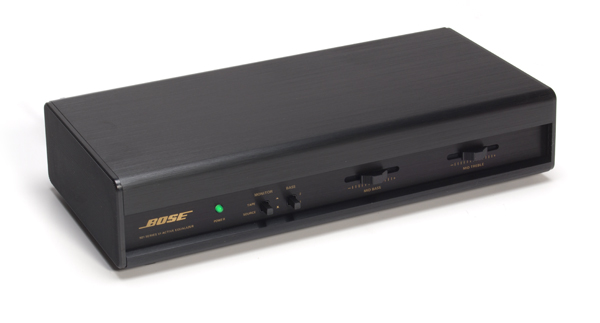 The EQ Box and The Moment of Truth
The EQ Box and The Moment of Truth
Because the Bose 901 makes use of nine full-range drivers, it takes advantage of an inline equalizer to make the speakers sound the way they are intended. Traditionalists, before you cry foul, think of the popularity of DSP-based speakers these days. Bose achieves a similar, if less sophisticated and considerably less-expensive effect with a passive EQ. The manual states the EQ can be used with series V 901s, but earlier models require the proper box.
If you are using a receiver, the EQ must be placed in a tape-monitor circuit, or between amp and preamp if you have separates. The supplied pair of three-foot RCA patch cords gets the ball rolling. The EQ features a two-position button: position one offering a flatter response, and position two adding a slight bass bump, not unlike the loudness button on a 70s receiver. Finally, there are two sliding controls for mid-bass and mid-treble, the latter claiming the most control over the overall tonal balance.
Slightly Rolled off Highs and Pretty Solid Bass
When set up like a conventional pair of smaller monitor speakers, the 901s produce a sound much like the original Magnepan MGIIs. Fortunately, audio pack rat and contributor Jerold O’Brien still has a mint pair of MGIIs to which I listened for direct comparison. Sure enough, they enjoy a softer, more relaxed high-frequency response, just like the 901s. The current MMG we reviewed possesses a bit more treble extension than the original MGIIs, but does not throw as large a soundfield. And, both Magnepan models need a ton of power to get up and go.
Where in semi-nearfield the 901s produce a wide soundstage, they also cast an excellent stereo image. A suite of Joni Mitchell tunes from Court and Spark, Hissing of Summer Lawns, and Don Juan’s Reckless Daughter captures her voice in the same approximate place as it’s found in my reference system. Sampling a wide range of solo vocalists reveals the importance of the mid-treble slider. Push too much for treble brightness and the vocals become grainy—not unlike when adjusting toe-in with a conventional speaker.
Thanks to their wide dispersion and massive soundstage, the 901s excel playing live-recorded music. Ted Nugent’s “My Love is Like a Tire Iron” from Intensities in Ten Cities equates to an impressive experience when cranked to brain-damage levels. Nugent’s band is spread-out between and beyond the speaker boundaries, and never diminishes in intensity when I get up off the couch to grab another beer. These speakers rock.
Those questioning the bass, look no further than the Stereophile test CD. 50hz tones were reproduced solidly, with plenty of energy on the 40hz track, though things dropped off pretty significantly beneath 40hz. A quick listen to a handful of bass heavy tracks from Pink Floyd, Genesis and Yello proved highly convincing and again, way more powerful than a number of small stand mounted speakers that I’m very familiar with.
Advantages of a Single Speaker Design
The essentially crossoverless design gives the 901 an unmistakable coherence, the model’s greatest strength. Its incredibly wide dispersion comes in a close second. The Bose 901s sound great anywhere in the room, and what you might give up in terms of ultra-focused, sweet-spot listening, you’ll gain in spades when you have a room full of people. These could very well be one of the world’s three or four best party speakers. Again, compromise: Would you like a pair of speakers that you just listen to in your listening chair for private sessions, or do you do most of your listening in secondary mode while hanging out in the house cooking and entertaining?
No doubt, some graininess sneaks into the midband because the EQ box isn’t chock full of Mundorf capacitors. That said, have you ever taken a peek at the crossover of your choice $1,400 speaker? Precious few include components sporting any better quality.
After extensive listening, the Bose 901s strike me as being damn good. They have some limitations, but don’t all $1,400 speakers? For that matter, what $10,000 speakers are perfect? I’ve heard a handful of speakers that check a couple more audiophile boxes than the 901s, but I’ve heard many more that sound much worse. Much as I hate audiophile clichés, the “sins of omission” has never been truer than with these speakers. They are so smooth and musical, it’s tough to freak out about the missing detail.
And that’s the area in which the 901 lacks: reproducing low-level detail and microdynamics. When the keyboard enters the first verse of Joni Mitchell’s “Trouble Child,” it’s subdued, as are the bongos at the beginning of “Jericho.” Again, I suspect information is lost in the EQ and through the stock cables. What the 901s sacrifice here, they make up for on a broader scale via the ability to play really loud and without strain.
The 901s cruise while being played at volumes well beyond those that would reduce mini monitors to rubble. Turning up Ace Frehley’s “Genghis Khan” from Anomaly at a level that hits 100 db peaks proves effortless.
Am I Nuts?
For those that think I’ve lost my marbles, I’ve played in every corner of the audiophile sandbox. Other than plasma tweeter designs, I’ve had my hands on almost everything over the past 35 years. Long-time TONEAudio readers know I have a soft spot for panel speakers (full range ESLs, in particular) and single-driver/SET systems. The 901s share many of the similarities that make enticing the latter types of speakers, and come with few of the limitations. Quad 57s are more beguiling through the midband, the MartinLogan speakers carry more extension at both ends of the frequency spectrum, and the Magepans lie somewhere in between. But they cost more and present greater challenges to a room and system.
Like any other “audiophile” speaker, the Bose 901 provides less-than-optimal results if setup is executed without care. I found the most lifelike sound came via a configuration slightly counterintuitive to that suggested by the manual.
The Bose 901s are equally highly musical and easy to listen to for hours without fatigue, characteristics many other speakers fail to deliver. Indeed, my audiophile buddies that I bribed into my listening room with IPAs are still shocked at just how good the 901s sound. As my wife likes to say, “What if Bigfoot is really a nice guy?” Consider this myth busted.
To make this conclusion as perfectly clear as possible and stave off any confusion: A handful of speakers in the $1,400 range reproduce music more accurately than the Bose 901. But—and like Pee Wee Herman likes to say, “Everyone has a big but”—the 901 gets the essence of the music right. The crossoverless design does a fantastic job with pace, which is what always draws me to single-driver and full-range electrostatic designs.
The ease with which it yields solid results makes the Bose 901 very attractive to both the normal music lover and budding audiophile. Mix the Bose 901s, a $150 vintage receiver, and an iPod, and you’ve created a rocking system. Add a better source and substitute a great tube integrated, and you’ll be shocked at the sheer musicality of the combination.
Yes, every speaker design involves compromise. Considering that this model is aimed more at the mass market than the audiophile, the 901s possess more than enough virtue to be considered an excellent value. They are certainly one of the most fun speakers I’ve had the pleasure to hear. Isn’t that what this is all supposed to be about?
The third and final installment to this trilogy will include listening results with alternate cable placement, changes to the reference system and speaker placement options. So forget all the folklore you’ve heard about the Bose 901s, these are serious speakers. I’m seriously considering keeping the review pair for my beach house – they will fit right in with the Eames Lounge chair and Noguchi table.
Part 3: Epilogue
After listening to the Bose 901s for a couple of weeks, I remain convinced they offer good value for the price and are incredibly user-friendly. But how do they respond to the usual tweaks applied by audiophile to practically every other speaker?
Premium Components
While the 901s offer a more diffuse soundfield than many speakers, they have enough resolution to tell the difference between a vintage or mass-market receiver—as well as more upscale units, though, at a certain point, the contrast becomes fruitless. For example, it’s very easy to note the variation between the Pioneer SX-424 and Cambridge 740 amplifier, as well as the distinction between tube and solid-state amplification.
Stepping up the cable quality from standard Radio Shack 16-gauge wire also pays dividends in upper-midrange clarity and high-frequency extension—both priorities. Swapping the 16-gauge wire for a $199 pair of AudioQuest Rocket 33 speaker cables, and the supplied RCA patch cords for two pairs of $39 AudioQuest Copperhead interconnects, brings greater focus to the overall presentation.
 Ah, the Pedestals
Ah, the Pedestals
Even if the Bose 901s do not use a tweeter, per se, it’s to your advantage to get them up higher for critical listening than the height provided by the standard 18-inch pedestals; the manual specifies 18-36 inches as optimal. Again, just as a traditional speaker benefits, the 901s profit from solid speaker stands that are spiked at the bottom.
A few spots of blu-tack between the speakers and a pair of 24-inch Sound Anchor stands up the game, yielding tighter and more resolute bass response as well as a greater sense of pinpoint imaging across the soundstage. The Sound Anchor stands also make it much easier to take advantage of upgraded speaker cable, as it must travel down the center of the Bose pedestals. Those planning on using audiophile-vetted cable will have to get handy with a large drill bit to modify the stands. There’s no way you can pair Nordost Odin speaker cable with the 901s and the stock pedestal stands. Don’t even think about it.
Backwards Listening
A number of Bose enthusiasts enjoy listening to 901s “in reverse,” allowing the eight drivers mounted on the rear of the cabinet to face the listening position. My spirit of investigation encouraged this tact, but it was not my favorite position. There’s slightly more HF extension, but the big, expansive soundfield that makes the speaker so enticing simply disappears.
Final Thoughts
That’s my adventure with the Bose 901. These speakers have been a blast to listen to with every kind of music. While they yield decent performance with a low-budget receiver, they are worthy of journeyman-level components and a modest cable upgrade. Advanced hobbyists could probably uncover even more performance by modding the EQ’s passive components, but doing so is well beyond the scope of this review and definitely voids the warranty.
Bigfoot may still be lurking in the shadows (the rumor suggests he is in upstate Washington somewhere near the Canadian border), but the Bose 901 speakers are only a couple of mouse clicks away. Do it.
www.bose.com
 Perhaps the most enjoyable part of the hifi journey is discovering something new, especially on a heavily traveled road. It’s like discovering that cool coffee shop down the street, only to find that it’s been there for years and you just passed it by. The same could be said for the Unison Research S6 integrated amplifier, now in production for over a decade.
Perhaps the most enjoyable part of the hifi journey is discovering something new, especially on a heavily traveled road. It’s like discovering that cool coffee shop down the street, only to find that it’s been there for years and you just passed it by. The same could be said for the Unison Research S6 integrated amplifier, now in production for over a decade.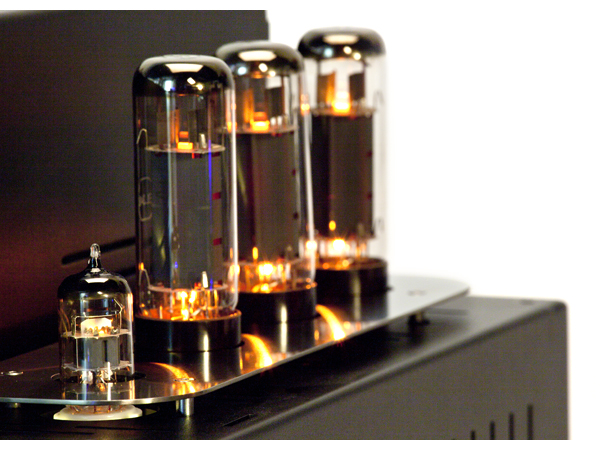 Standard issue tubes continue to improve and the current TungSol EL34’s supplied with the S6 proved close enough to the megabuck vintage EL34s on hand for comparison, that for all but the most fanatic and well heeled tube roller, you can rest assured the S6 sounds great right out of the box. The controlled biasing combined with not running the output tubes terribly hard should make for ample tube life. The 12AX7 driver tubes should last in the 10,000 hour range, making this an easy amplifier to live with long term.
Standard issue tubes continue to improve and the current TungSol EL34’s supplied with the S6 proved close enough to the megabuck vintage EL34s on hand for comparison, that for all but the most fanatic and well heeled tube roller, you can rest assured the S6 sounds great right out of the box. The controlled biasing combined with not running the output tubes terribly hard should make for ample tube life. The 12AX7 driver tubes should last in the 10,000 hour range, making this an easy amplifier to live with long term.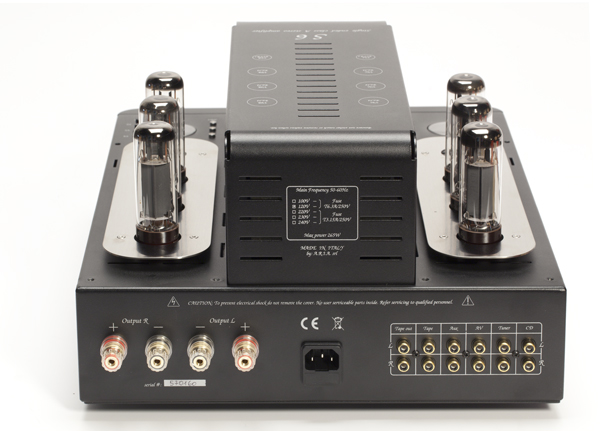 Mightier Than Its Power Rating Suggests
Mightier Than Its Power Rating Suggests Simplicity, Form and Function
Simplicity, Form and Function



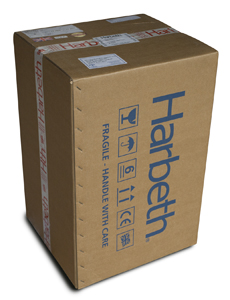 Tonemasters
Tonemasters Chameleon – like
Chameleon – like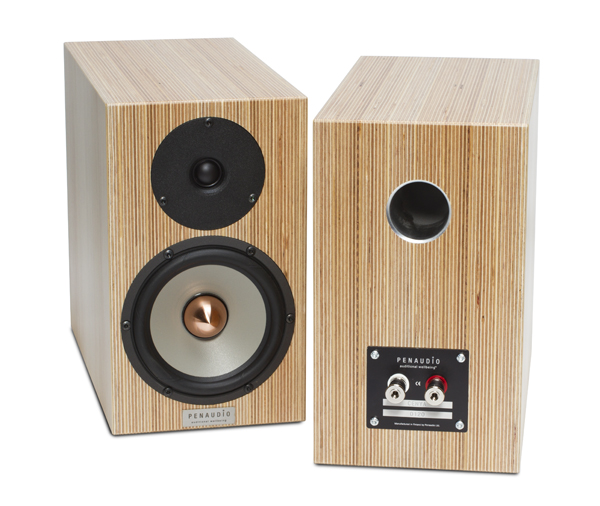 Reporting on the Porsche/Burmester event for Issue 46’s cover story put me at a dinner table with a new group of writers. Instead of the usual cronies from high-end audio, I encountered a pack of automotive journalists. A staff member from Automobile magazine commented that, on a recent outing with a handful of incredibly wealthy car collectors, he asked everyone the same question: What is the most fun car you own? He became fascinated to discover that, even though the owners all possess stables of exotic machinery, five of the six respondents named the Mini Cooper S Convertible.
Reporting on the Porsche/Burmester event for Issue 46’s cover story put me at a dinner table with a new group of writers. Instead of the usual cronies from high-end audio, I encountered a pack of automotive journalists. A staff member from Automobile magazine commented that, on a recent outing with a handful of incredibly wealthy car collectors, he asked everyone the same question: What is the most fun car you own? He became fascinated to discover that, even though the owners all possess stables of exotic machinery, five of the six respondents named the Mini Cooper S Convertible. Mighty Mids
Mighty Mids Penaudio Cenya Loudspeaker
Penaudio Cenya Loudspeaker

 The EQ Box and The Moment of Truth
The EQ Box and The Moment of Truth Ah, the Pedestals
Ah, the Pedestals Imagine controlling ten our even twenty thousand full-resolution albums from your iPad while basking in the comfort of a cozy couch or listening chair. Meridian’s new Media Core App for the renowned Sooloos music server makes it possible. If you’ve played with a Sooloos at a hi-fi show or a local dealer, you know the effortlessness with which a Sooloos presents a large music collection. And if you are a current Sooloos owner, you’ve been dreaming about this marriage since the minute you unpacked your iPad.
Imagine controlling ten our even twenty thousand full-resolution albums from your iPad while basking in the comfort of a cozy couch or listening chair. Meridian’s new Media Core App for the renowned Sooloos music server makes it possible. If you’ve played with a Sooloos at a hi-fi show or a local dealer, you know the effortlessness with which a Sooloos presents a large music collection. And if you are a current Sooloos owner, you’ve been dreaming about this marriage since the minute you unpacked your iPad. The cost of a complete system will be a barrier to entry for some, as the Control 15 core (which is essentially a complete Windows PC with an integral touch screen and Smartlink output and has 500 gb of internal storage that still requires external backup) has an MSRP of $8,500. Those with larger music collections need only add the Media Drive 600, which can be configured to contain about 7500 albums with backup.
The cost of a complete system will be a barrier to entry for some, as the Control 15 core (which is essentially a complete Windows PC with an integral touch screen and Smartlink output and has 500 gb of internal storage that still requires external backup) has an MSRP of $8,500. Those with larger music collections need only add the Media Drive 600, which can be configured to contain about 7500 albums with backup. Other favorite Sooloos features are there as well, focus and swim functions also allow you to concentrate on a particular artist, mood, or genre, taking random play to another level completely. Want to just listen to 60’s blues, old school rap or string quartets? Piece of cake, and no other music software allows this amount of control.
Other favorite Sooloos features are there as well, focus and swim functions also allow you to concentrate on a particular artist, mood, or genre, taking random play to another level completely. Want to just listen to 60’s blues, old school rap or string quartets? Piece of cake, and no other music software allows this amount of control. The app is free now at the Apple App Store, but you will need a Meridian Music Server to take advantage of it.
The app is free now at the Apple App Store, but you will need a Meridian Music Server to take advantage of it.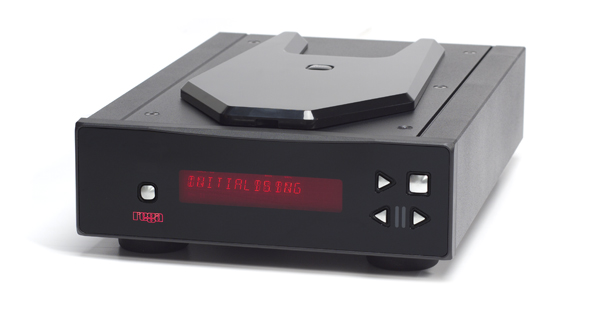 Rega’s Apollo-R smokes the dCS Paganini. Okay, it’s not that awesome, but I got your attention, no? In all seriousness, the Apollo-R is a damn fine CD player. Even as computer audio continues to be all the rage, many people still enjoy dropping a CD into a transport and pushing “Play.” Rega is one reason why they do.
Rega’s Apollo-R smokes the dCS Paganini. Okay, it’s not that awesome, but I got your attention, no? In all seriousness, the Apollo-R is a damn fine CD player. Even as computer audio continues to be all the rage, many people still enjoy dropping a CD into a transport and pushing “Play.” Rega is one reason why they do. In Service of the Music
In Service of the Music Tonality to Spare
Tonality to Spare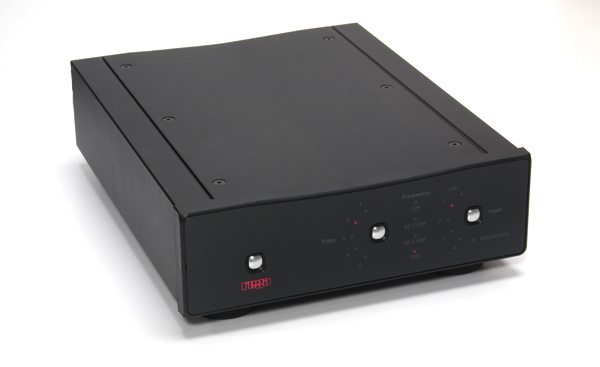 To DAC or Not to DAC
To DAC or Not to DAC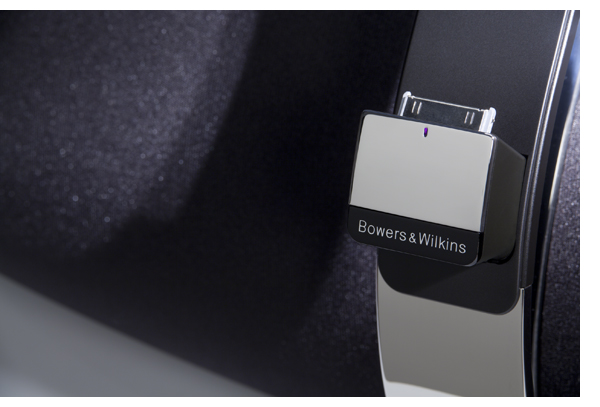
 While our original Zeppelin survived teenager torture for four years, everyone sighed a huge sigh of relief thanks to AirPlay, knowing there would be no more rough and tumble with the dock. The wireless connectivity also makes for a ton of fun when friends visit – now everyone can play their music through the Zeppelin Air.
While our original Zeppelin survived teenager torture for four years, everyone sighed a huge sigh of relief thanks to AirPlay, knowing there would be no more rough and tumble with the dock. The wireless connectivity also makes for a ton of fun when friends visit – now everyone can play their music through the Zeppelin Air. Horsepower without finesse is uninteresting (or perhaps a Dodge Viper) and again the Zeppelin Air glides through effortlessly. The piano solo on Bowie’s “Aladdin Sane” from the self titled album was brilliant and hung in the air well in front of the speakers possessing exceptional timbral accuracy. Whatever secrets lurk in the DSP processing, the engineers in charge should get a pay raise. If I only had $600 to spend on a system, I wouldn’t even bother with separates. Those in a compact space will find that the Zeppelin Air makes a great addition to your flat screen TV for a lot less than any number of soundbars now available.
Horsepower without finesse is uninteresting (or perhaps a Dodge Viper) and again the Zeppelin Air glides through effortlessly. The piano solo on Bowie’s “Aladdin Sane” from the self titled album was brilliant and hung in the air well in front of the speakers possessing exceptional timbral accuracy. Whatever secrets lurk in the DSP processing, the engineers in charge should get a pay raise. If I only had $600 to spend on a system, I wouldn’t even bother with separates. Those in a compact space will find that the Zeppelin Air makes a great addition to your flat screen TV for a lot less than any number of soundbars now available. The B&W Zeppelin Air
The B&W Zeppelin Air Everything Hans-Ole Vitus makes is heavy. Really fucking heavy. Break-your-back heavy. But those who possess the strength to lift his SM-010 monoblocks out of the boxes will be rewarded with fantastic sound. That said, it’s become very popular of late, at least in the United States, to take shots at the wealthy and, in particular, at luxury goods. So if the idea of a $40k pair of amplifiers seems offensive, let fly the invective and take a pass.
Everything Hans-Ole Vitus makes is heavy. Really fucking heavy. Break-your-back heavy. But those who possess the strength to lift his SM-010 monoblocks out of the boxes will be rewarded with fantastic sound. That said, it’s become very popular of late, at least in the United States, to take shots at the wealthy and, in particular, at luxury goods. So if the idea of a $40k pair of amplifiers seems offensive, let fly the invective and take a pass. Flick of the Switch
Flick of the Switch Not Just Another Brick in the Audio Wall
Not Just Another Brick in the Audio Wall Early class D amplifiers resemble the first efforts at CD players; a great idea that wasn’t fully realized on the first iteration or two. If you’ve been around long enough to remember just how bad those first CD players sounded, you’ll probably agree that the first class D amplifiers offered up the same aural aesthetic, sounding two dimensional, somewhat shrill on the top end and fatiguing after a short period of time.
Early class D amplifiers resemble the first efforts at CD players; a great idea that wasn’t fully realized on the first iteration or two. If you’ve been around long enough to remember just how bad those first CD players sounded, you’ll probably agree that the first class D amplifiers offered up the same aural aesthetic, sounding two dimensional, somewhat shrill on the top end and fatiguing after a short period of time. Preamplifier Compatibility
Preamplifier Compatibility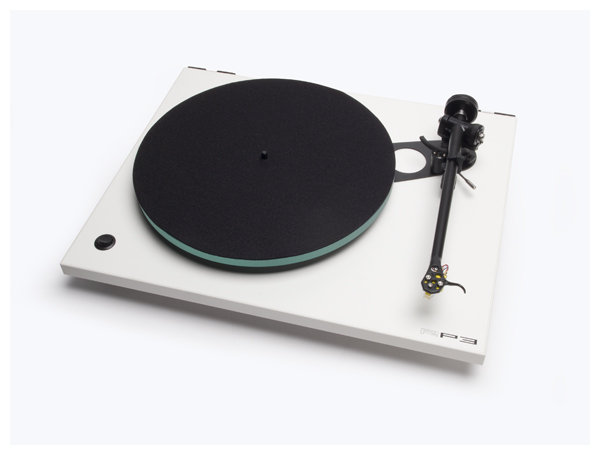 Roy Gandy, the founder of Rega Research, proceeds with new ideas and new products at his own pace. Two years ago, Gandy had a prototype table in his listening room that looked as if it could have been a replacement for the P9 turntable, the top end of Rega’s range. But with an impish grin, Gandy quickly pointed out that it was only an “engineering exercise” and that the concept could either make it into production in months, not at all, or “be incorporated somewhere else in the range.”
Roy Gandy, the founder of Rega Research, proceeds with new ideas and new products at his own pace. Two years ago, Gandy had a prototype table in his listening room that looked as if it could have been a replacement for the P9 turntable, the top end of Rega’s range. But with an impish grin, Gandy quickly pointed out that it was only an “engineering exercise” and that the concept could either make it into production in months, not at all, or “be incorporated somewhere else in the range.”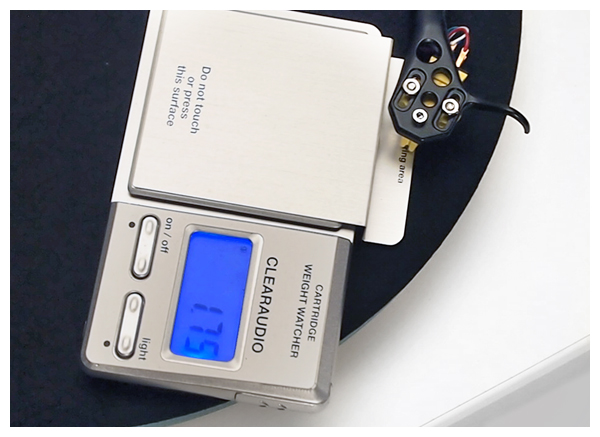 Apples to Apples
Apples to Apples The Comparo
The Comparo The new RB303 tonearm is another major factor in the new ‘table’s increased clarity and resolution. While the two arms look similar, a rigorous examination of the pivot area reveals the new arm to be beefier than its predecessor. Combining the latter aspect with careful attention to mass distribution and improved bearings further explains the additional detail I experienced—particularly with acoustic music. When comparing nearly identical pressings of Traffic’s John Barleycorn Must Die, sax and flute solos possessed more body with the new ‘table, regardless of what pressing I spun.
The new RB303 tonearm is another major factor in the new ‘table’s increased clarity and resolution. While the two arms look similar, a rigorous examination of the pivot area reveals the new arm to be beefier than its predecessor. Combining the latter aspect with careful attention to mass distribution and improved bearings further explains the additional detail I experienced—particularly with acoustic music. When comparing nearly identical pressings of Traffic’s John Barleycorn Must Die, sax and flute solos possessed more body with the new ‘table, regardless of what pressing I spun.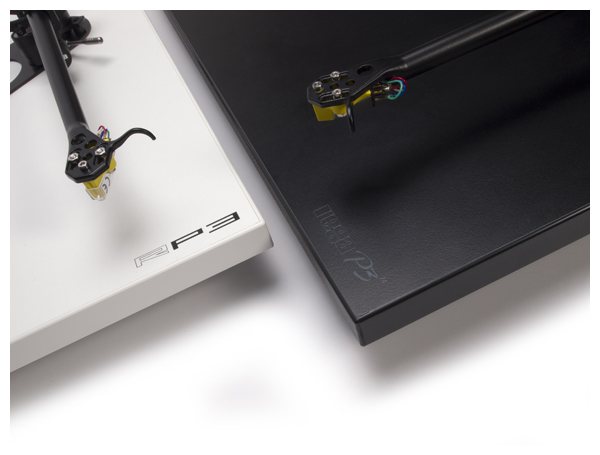 A New Benchmark
A New Benchmark It’s a great time to be a vinyl enthusiast. Despite all the excitement over five- and six-figure turntables, many audiophiles are not spending that kind of dough on record players. There are a lot of music lovers exploring vinyl for the first time and getting their feet wet with a $300 to $500 table-and-cartridge combination, but if you really want a stronger dose of analog magic (and remember, digital keeps getting better all the time), you need to spend some more money.
It’s a great time to be a vinyl enthusiast. Despite all the excitement over five- and six-figure turntables, many audiophiles are not spending that kind of dough on record players. There are a lot of music lovers exploring vinyl for the first time and getting their feet wet with a $300 to $500 table-and-cartridge combination, but if you really want a stronger dose of analog magic (and remember, digital keeps getting better all the time), you need to spend some more money. Construction
Construction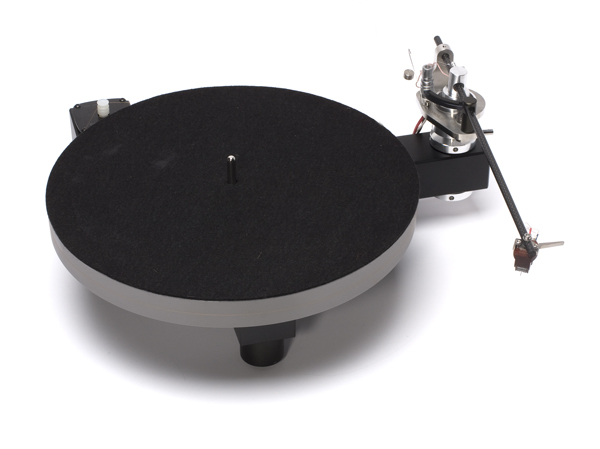 Conclusion
Conclusion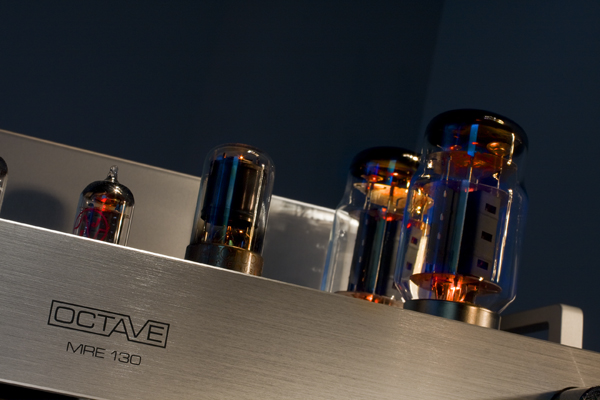 Merely mentioning that you still listen to vinyl records in casual conversation amongst non-audiophiles almost always invokes a raised eyebrow. And if you try to explain the thrill of vacuum tubes, people that don’t give you a dog-like stare will surely move you to the penalty box. But as vacuum tube fans know, current designs continue to advance like the Energizer bunny, with the best examples light years ahead of the humble beginning of the Williamson circuit from the 1940s. In 1955, the Heathkit version of the original circuit claimed to have “performance far beyond the finest speaker systems available.” Much has improved since then.
Merely mentioning that you still listen to vinyl records in casual conversation amongst non-audiophiles almost always invokes a raised eyebrow. And if you try to explain the thrill of vacuum tubes, people that don’t give you a dog-like stare will surely move you to the penalty box. But as vacuum tube fans know, current designs continue to advance like the Energizer bunny, with the best examples light years ahead of the humble beginning of the Williamson circuit from the 1940s. In 1955, the Heathkit version of the original circuit claimed to have “performance far beyond the finest speaker systems available.” Much has improved since then. Listening Impressions
Listening Impressions Step Two: Adding the Big Black Boxes
Step Two: Adding the Big Black Boxes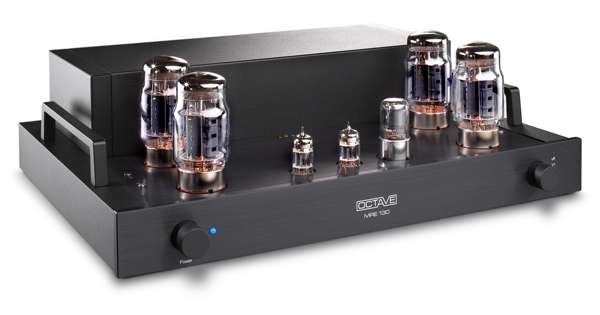 Conclusion
Conclusion “Where’s the sub?” Those were the first words out of my mouth as I entered Danny Haikin’s office at B&W in London earlier this year. He just smiled and said, “There isn’t one. That’s just coming from the two desktop speakers.” Then we spent the better part of the next hour talking about music while I got a proper demo of B&W’s latest masterpiece, built upon the technology incorporated in its Zeppelin models.
“Where’s the sub?” Those were the first words out of my mouth as I entered Danny Haikin’s office at B&W in London earlier this year. He just smiled and said, “There isn’t one. That’s just coming from the two desktop speakers.” Then we spent the better part of the next hour talking about music while I got a proper demo of B&W’s latest masterpiece, built upon the technology incorporated in its Zeppelin models.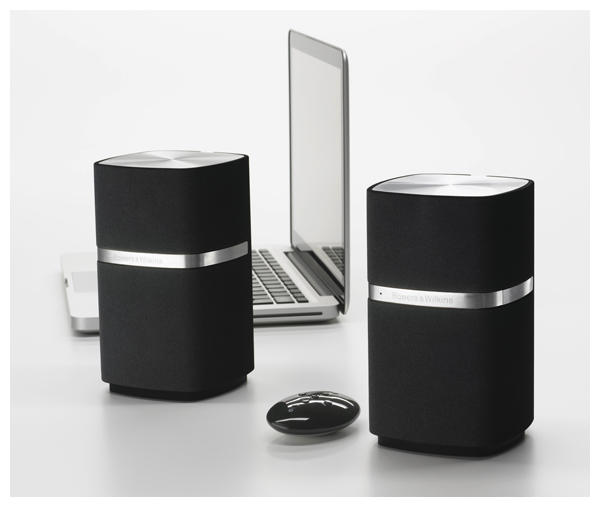 Verifying Initial Observations
Verifying Initial Observations No Need to Fear High-End Sound
No Need to Fear High-End Sound In an audiophile world where individual components have five (and sometimes six) figure price tags, the concept of being able to get a preamplifier and a pair of 200-watt mono amplifiers that use discrete circuitry instead of just being Class-D for under $1,200 is refreshing. You may have guessed that such components are manufactured offshore and sold direct to you from the manufacturer; both methods are necessary to keep costs down to this level. However, due to the high praise that greets Emotiva products, it appears that the company makes quality control a main priority.
In an audiophile world where individual components have five (and sometimes six) figure price tags, the concept of being able to get a preamplifier and a pair of 200-watt mono amplifiers that use discrete circuitry instead of just being Class-D for under $1,200 is refreshing. You may have guessed that such components are manufactured offshore and sold direct to you from the manufacturer; both methods are necessary to keep costs down to this level. However, due to the high praise that greets Emotiva products, it appears that the company makes quality control a main priority.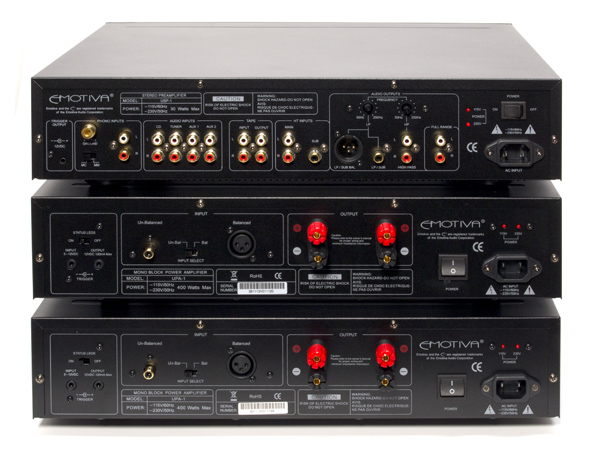 Easy Listening
Easy Listening Taking a Spin
Taking a Spin Emotiva USP-1 Preamplifier and UPA-1 Amplifiers
Emotiva USP-1 Preamplifier and UPA-1 Amplifiers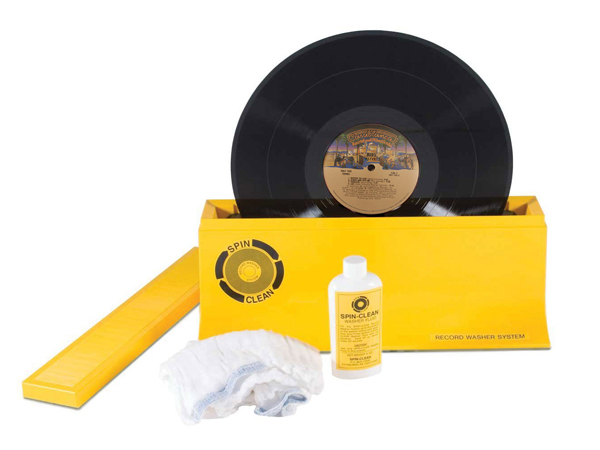 Yeah, yeah, we are pretty much the last ones to the party to discover the Spin Clean Record cleaner. But in case you haven’t heard of this incredibly reasonably priced record cleaning system that’s been around since 1975 and still made in the USA, it’s definitely worth your time. Dirt is the enemy of your records, it’s pretty much the enemy of the whole vinyl playback chain – it’s what makes for most of those nasty clicks and pops that the mainstream likes to tell us is “the romance of vinyl.”
Yeah, yeah, we are pretty much the last ones to the party to discover the Spin Clean Record cleaner. But in case you haven’t heard of this incredibly reasonably priced record cleaning system that’s been around since 1975 and still made in the USA, it’s definitely worth your time. Dirt is the enemy of your records, it’s pretty much the enemy of the whole vinyl playback chain – it’s what makes for most of those nasty clicks and pops that the mainstream likes to tell us is “the romance of vinyl.”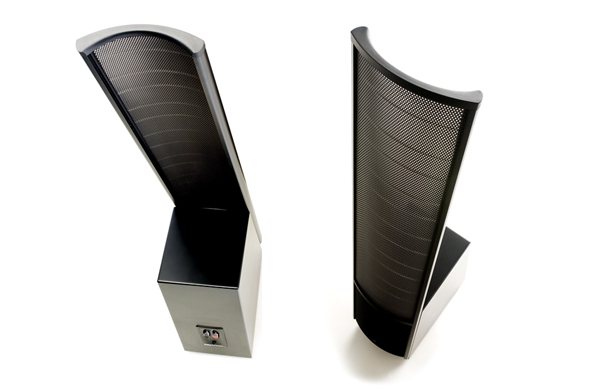 If you happen to be a music lover who adores electrostatic speakers, you no doubt have your favorites. And if MartinLogan is on your radar, its Aerius is definitely at the top of your list. Considering what an amazing value the Aerius offered back in 1992 for about $2000, the fact that MartinLogan has hit nearly the same price with its ElectroMotion is nothing less than a major miracle in 2011.
If you happen to be a music lover who adores electrostatic speakers, you no doubt have your favorites. And if MartinLogan is on your radar, its Aerius is definitely at the top of your list. Considering what an amazing value the Aerius offered back in 1992 for about $2000, the fact that MartinLogan has hit nearly the same price with its ElectroMotion is nothing less than a major miracle in 2011.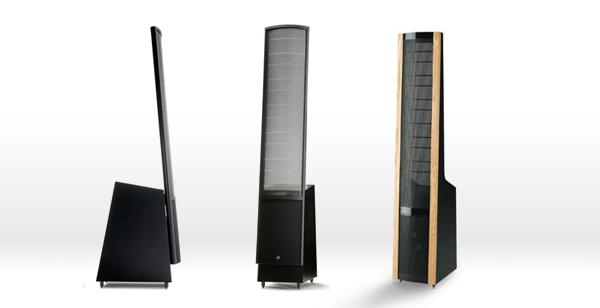 Comparing Old and New
Comparing Old and New

 If you’re as sick as I am of the earbuds that were packaged with your iPod but don’t really want to become a full fledged headphone addict, here’s a great pair of phones that will server you well – The Image ONE by Klipsch. Yeah, the speaker company. After a quick listen at this years Consumer Electronics Show, I wouldn’t let the Image ONE’s go – I forced them to let me take em home! Here was a reasonably priced pair of headphones ($149.95) that felt as if they should have been much more expensive, yet were still compact enough to easily pack in a piece of carry on luggage. The perfect accessory for the music lover on the go. This modest price tag also includes a semi-hard shell case that zips up and includes a tiny pocket that could carry cable adapters or perhaps a few memory cards with more music.
If you’re as sick as I am of the earbuds that were packaged with your iPod but don’t really want to become a full fledged headphone addict, here’s a great pair of phones that will server you well – The Image ONE by Klipsch. Yeah, the speaker company. After a quick listen at this years Consumer Electronics Show, I wouldn’t let the Image ONE’s go – I forced them to let me take em home! Here was a reasonably priced pair of headphones ($149.95) that felt as if they should have been much more expensive, yet were still compact enough to easily pack in a piece of carry on luggage. The perfect accessory for the music lover on the go. This modest price tag also includes a semi-hard shell case that zips up and includes a tiny pocket that could carry cable adapters or perhaps a few memory cards with more music.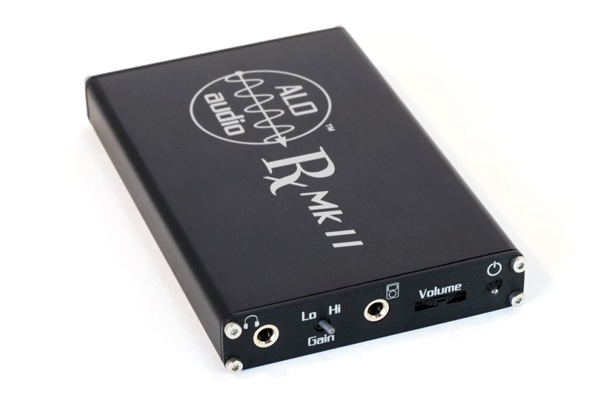
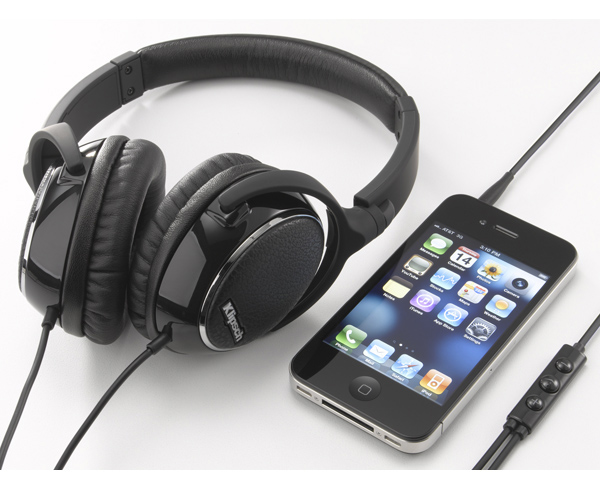
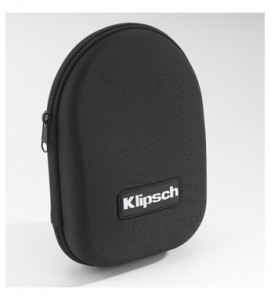
 Over the years there has been more than one attempt at an omnidirectional speaker, but I can’t ever really recall one that has worked well, until now. So often we are presented with the dilemma of wanting great sound, but not being able to make the necessary sacrifices to put a pair of speakers where they can provide it. Enter the HRS-120’s. Reminiscent of the 70’s in their standard wood finish, I assure you the sound is completely modern, though those old enough to remember the Ohm Walsh speaker systems will definitely see an outwardly familiar shape. A hexagonal column that stands about 14 inches in diameter and about four feet tall. On top of the HRS-120 is their trademark DDD driver, which uses a titanium element. For more information about the DDD driver, click here:
Over the years there has been more than one attempt at an omnidirectional speaker, but I can’t ever really recall one that has worked well, until now. So often we are presented with the dilemma of wanting great sound, but not being able to make the necessary sacrifices to put a pair of speakers where they can provide it. Enter the HRS-120’s. Reminiscent of the 70’s in their standard wood finish, I assure you the sound is completely modern, though those old enough to remember the Ohm Walsh speaker systems will definitely see an outwardly familiar shape. A hexagonal column that stands about 14 inches in diameter and about four feet tall. On top of the HRS-120 is their trademark DDD driver, which uses a titanium element. For more information about the DDD driver, click here: Conclusion
Conclusion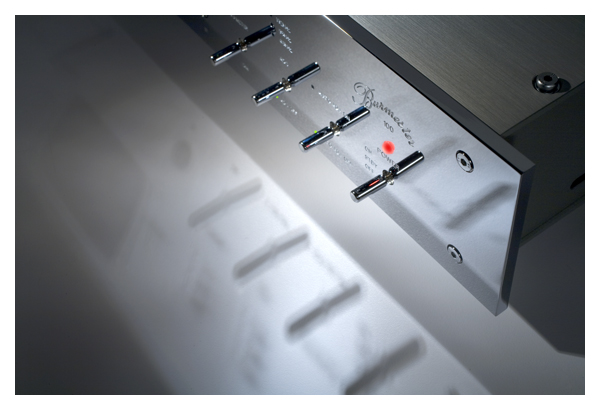 It’s been a long time since Burmester has produced a phono stage. Their last model, the 838, was produced in the 80’s. However, with vinyl making such a comeback, Dieter Burmester felt the time was right to build a phono stage that was worthy of his current Reference Line components. And in typical Burmester fashion, it addresses every aspect of the analog domain – it can even be ordered with a studio quality ADC (analog to digital converter) on board, so that any vinyl enthusiast migrating to the high quality digital world has all of their bases covered.
It’s been a long time since Burmester has produced a phono stage. Their last model, the 838, was produced in the 80’s. However, with vinyl making such a comeback, Dieter Burmester felt the time was right to build a phono stage that was worthy of his current Reference Line components. And in typical Burmester fashion, it addresses every aspect of the analog domain – it can even be ordered with a studio quality ADC (analog to digital converter) on board, so that any vinyl enthusiast migrating to the high quality digital world has all of their bases covered. The subsonic filter worked well with a few older, more warped records that have not had a session with the Furutech flattener yet and I was unable to hear any difference in low frequency output. If the wide range of gain settings still isn’t enough, the 100 has the ability to boost the output by an additional 6db, so there should never be a situation where the 100 Phono does not possess enough gain.
The subsonic filter worked well with a few older, more warped records that have not had a session with the Furutech flattener yet and I was unable to hear any difference in low frequency output. If the wide range of gain settings still isn’t enough, the 100 has the ability to boost the output by an additional 6db, so there should never be a situation where the 100 Phono does not possess enough gain. All controls are easily available on the front panel and clearly marked, so finding the proper loading and gain settings for your cartridge couldn’t be easier. If you have multiple turntable/cartridge owners will be instantly at ease with this flexibility that few other phono stages match.
All controls are easily available on the front panel and clearly marked, so finding the proper loading and gain settings for your cartridge couldn’t be easier. If you have multiple turntable/cartridge owners will be instantly at ease with this flexibility that few other phono stages match.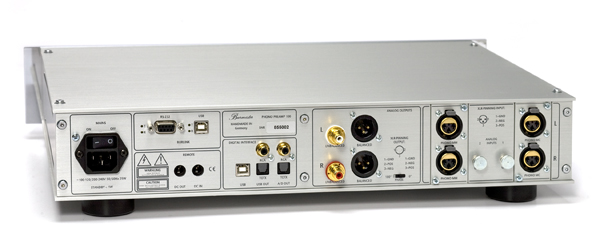 Burmester feels that keeping the signal path balanced all the way through, so the 100 only has balanced inputs. This will require cable retermination or using the supplied XLR to RCA adaptors. Considering the additional benefit to running a phono cartridge balanced, I would highly suggest having your tonearm cable terminated for balanced operation. I used a Cardas Clear Phono cable and the Burmester Silver Balanced Phono Cable ($1,595) The Burmester cable was perhaps a bit too revealing for my taste, but again like any other cable, this is a tone control that needs to be fitted to your taste.
Burmester feels that keeping the signal path balanced all the way through, so the 100 only has balanced inputs. This will require cable retermination or using the supplied XLR to RCA adaptors. Considering the additional benefit to running a phono cartridge balanced, I would highly suggest having your tonearm cable terminated for balanced operation. I used a Cardas Clear Phono cable and the Burmester Silver Balanced Phono Cable ($1,595) The Burmester cable was perhaps a bit too revealing for my taste, but again like any other cable, this is a tone control that needs to be fitted to your taste.
 For those of you that have been waiting for the next series of Croft amplification products, they are back with their Micro 25 preamplifier and Series 7 power amplifier. In case you aren’t familiar, don’t feel out of touch, Croft has always been one of the smallest of British hifi manufacturers, but worth seeking out if you are interested in high performance at a very reasonable price. The two components you see here are only $1,395 each.
For those of you that have been waiting for the next series of Croft amplification products, they are back with their Micro 25 preamplifier and Series 7 power amplifier. In case you aren’t familiar, don’t feel out of touch, Croft has always been one of the smallest of British hifi manufacturers, but worth seeking out if you are interested in high performance at a very reasonable price. The two components you see here are only $1,395 each.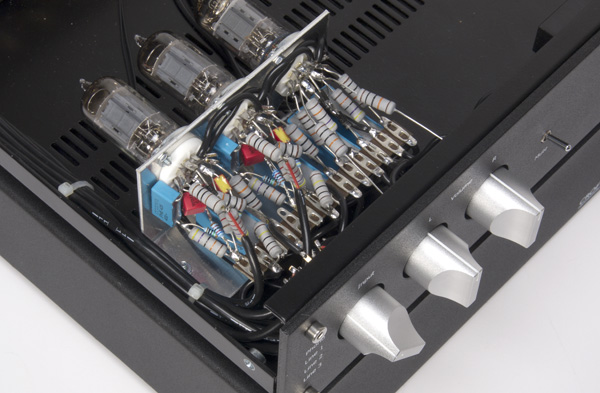


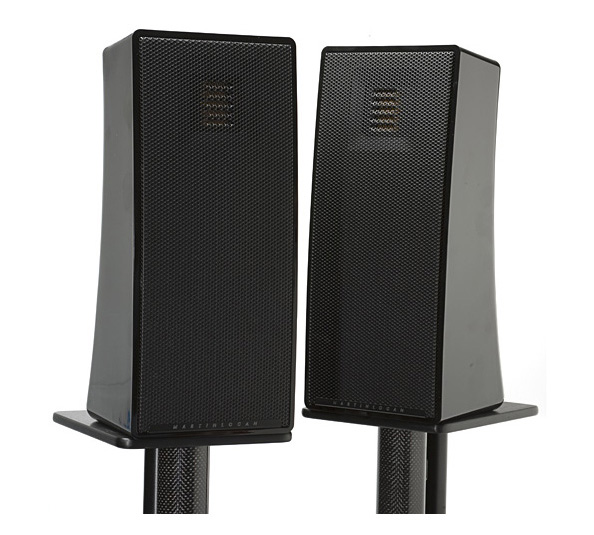 I must admit, I’m almost never impressed with what I hear at audio shows, and it’s not for the manufacturers’ lack of trying. It’s always tough to hear anything decently at a show, even if the room is set up fairly well. But at last year’s CEDIA convention, there was something that really blew me away, the final prototypes of MartinLogan’s new Motion series, especially when I saw how tiny they were.
I must admit, I’m almost never impressed with what I hear at audio shows, and it’s not for the manufacturers’ lack of trying. It’s always tough to hear anything decently at a show, even if the room is set up fairly well. But at last year’s CEDIA convention, there was something that really blew me away, the final prototypes of MartinLogan’s new Motion series, especially when I saw how tiny they were.


 Rega has established a solid reputation over the last thirty years now for building reasonably priced components packed with value beyond their price point. Rega turntables have always been a triumph of function and simplicity, with a legion of fans that span the globe. Founder Roy Gandy is a champion of giving his customers high performance without a high price tag, and didn’t even start building CD players until about ten years ago. His sense of humor is evident in their website, where it’s mentioned that Rega was “the last major high end company to build a CD player.”
Rega has established a solid reputation over the last thirty years now for building reasonably priced components packed with value beyond their price point. Rega turntables have always been a triumph of function and simplicity, with a legion of fans that span the globe. Founder Roy Gandy is a champion of giving his customers high performance without a high price tag, and didn’t even start building CD players until about ten years ago. His sense of humor is evident in their website, where it’s mentioned that Rega was “the last major high end company to build a CD player.”




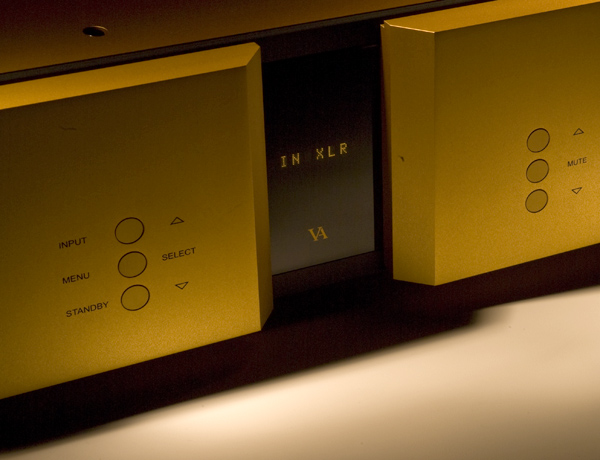 The Vitus Audio SS-050 is a very high performance, yet minimalist integrated amplifier. Tipping the upper end of the price scale at $26,500, this is another destination product, and with one XLR and one RCA input, must be made part of a system that has only two sources. I imagine that this should pose no problem for the average person who has an analog source and a digital source.
The Vitus Audio SS-050 is a very high performance, yet minimalist integrated amplifier. Tipping the upper end of the price scale at $26,500, this is another destination product, and with one XLR and one RCA input, must be made part of a system that has only two sources. I imagine that this should pose no problem for the average person who has an analog source and a digital source. As with any solid-state amplifier that has been in transit for some time, the SS-050 took about 48 hours to open up, stabilize and sound it’s best, though it was more than pleasant out of the shipping carton. After spending a few weeks with the amplifier and going through regular power cycles, it takes about 30 minutes to fully stabilize in normal play.
As with any solid-state amplifier that has been in transit for some time, the SS-050 took about 48 hours to open up, stabilize and sound it’s best, though it was more than pleasant out of the shipping carton. After spending a few weeks with the amplifier and going through regular power cycles, it takes about 30 minutes to fully stabilize in normal play.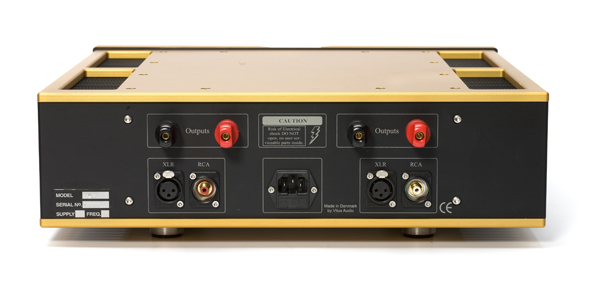 I just happened to be listening to the complete set of the current AC/DC remasters on vinyl, so the first track I played on the Vitus based system was “Live Wire” from the High Voltage album. The guitar lead-in on this piece instantly struck me, as I could hear the speakers in whatever cabinet Angus Young was using to record with rattle, much clearer than ever before. Next up was “Night Prowler” from Highway to Hell. Again, I was impressed with not only the weight, but also the subtle texture and roundness of the opening bass riffs in this track. When I turned this up, perhaps too loud, the placement of the snare drum remained rock solid, just in front of the soundstage on the right side, and did not fall back into the mix. However, when I went back to my early stamper originals, it was plainly obvious that these records were produced from digital safety masters; another layer of detail was now available.
I just happened to be listening to the complete set of the current AC/DC remasters on vinyl, so the first track I played on the Vitus based system was “Live Wire” from the High Voltage album. The guitar lead-in on this piece instantly struck me, as I could hear the speakers in whatever cabinet Angus Young was using to record with rattle, much clearer than ever before. Next up was “Night Prowler” from Highway to Hell. Again, I was impressed with not only the weight, but also the subtle texture and roundness of the opening bass riffs in this track. When I turned this up, perhaps too loud, the placement of the snare drum remained rock solid, just in front of the soundstage on the right side, and did not fall back into the mix. However, when I went back to my early stamper originals, it was plainly obvious that these records were produced from digital safety masters; another layer of detail was now available.
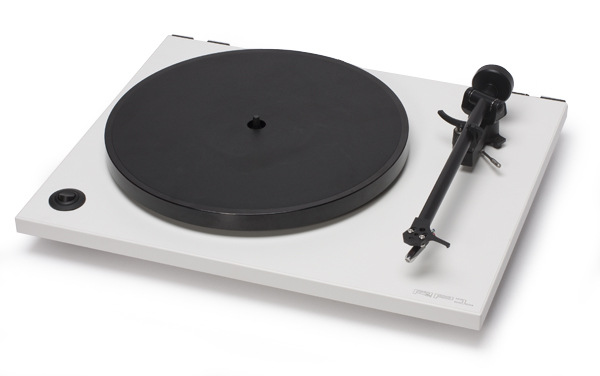 Rega met the budget turntable challenge in 2006 with their entry-level P1 turntable, offering the budding vinyl enthusiast a way to join the Rega camp with a brand new table and Ortofon OM5e cartridge for only $400. While Rega has always been one of the best values going in turntables, inflation and world currency markets have taken their toll everywhere. I remember purchasing my first Planar 3 turntable (back in 1979, without cartridge) for $389. Those were the days.
Rega met the budget turntable challenge in 2006 with their entry-level P1 turntable, offering the budding vinyl enthusiast a way to join the Rega camp with a brand new table and Ortofon OM5e cartridge for only $400. While Rega has always been one of the best values going in turntables, inflation and world currency markets have taken their toll everywhere. I remember purchasing my first Planar 3 turntable (back in 1979, without cartridge) for $389. Those were the days.
 The combination of an improved platter and bearing are a big hit on the RP1. Listening to samples from both tables on the MoFi edition of Genesis’ Trick of the Tail had the RP1 again trumping the P1 in bass weight on “Squonk” and HF definition and delicacy on the title track. Cymbals definitely had a smoother decay on the RP1 as well.
The combination of an improved platter and bearing are a big hit on the RP1. Listening to samples from both tables on the MoFi edition of Genesis’ Trick of the Tail had the RP1 again trumping the P1 in bass weight on “Squonk” and HF definition and delicacy on the title track. Cymbals definitely had a smoother decay on the RP1 as well.
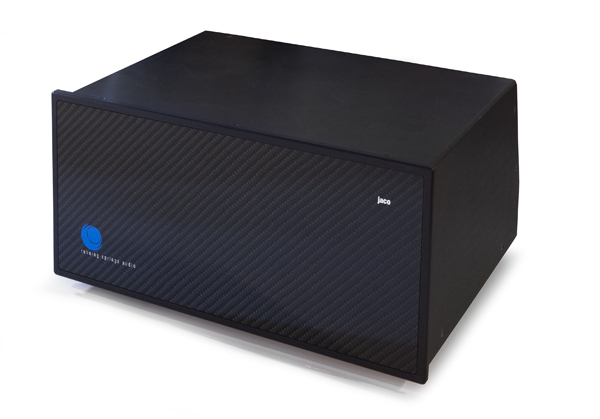 I’ve been using Running Springs power line conditioners with excellent luck for just over five years now and have upgraded my current reference system to their flagship products, the Dmitri (for all of my line level components) and the Maxim (for my power amplifier, on a separate 20 amp circuit), while the Haley that I purchased quite a few years ago is still working well in system two.
I’ve been using Running Springs power line conditioners with excellent luck for just over five years now and have upgraded my current reference system to their flagship products, the Dmitri (for all of my line level components) and the Maxim (for my power amplifier, on a separate 20 amp circuit), while the Haley that I purchased quite a few years ago is still working well in system two.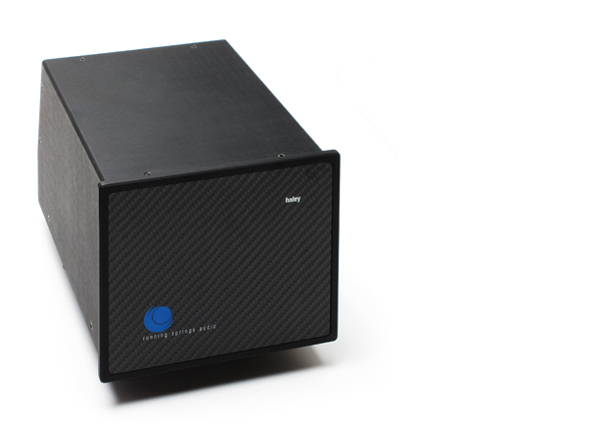 Definitely, a cost effective improvement
Definitely, a cost effective improvement If you pose the question, “What turntable should I buy for $1,500?” on an internet forum, have your hazmat suit on and be prepared to be bombarded with insults and advice. You’ll get suggestions from all over the audio spectrum; new, used, and modded this or that. Of course, everyone knows what’s best for you and God forbid that you question any of the self-proclaimed experts should you choose not to take their advice.
If you pose the question, “What turntable should I buy for $1,500?” on an internet forum, have your hazmat suit on and be prepared to be bombarded with insults and advice. You’ll get suggestions from all over the audio spectrum; new, used, and modded this or that. Of course, everyone knows what’s best for you and God forbid that you question any of the self-proclaimed experts should you choose not to take their advice. If you buy the Concept with one of the cartridge options, it will arrive with the cartridge installed and optimized at the factory, so all you will need to do is install the counterweight and set the tracking force. Be sure to hold the tonearm with one hand while installing the threaded counterweight, as it fits very snugly and could damage the arm otherwise.
If you buy the Concept with one of the cartridge options, it will arrive with the cartridge installed and optimized at the factory, so all you will need to do is install the counterweight and set the tracking force. Be sure to hold the tonearm with one hand while installing the threaded counterweight, as it fits very snugly and could damage the arm otherwise. During a moment of temporary madness, the Maestro was swapped out for Clearaudio’s $5,500 DaVinci MC cartridge, a master of detail retrieval. Granted, the small but mighty Concept did not offer as big a presentation as it did when mounted to the Clearaudio Innovation we reviewed a while back, but it wasn’t bad. If you are a real vinyl fanatic, I don’t think this table would be out of it’s league with your favorite cartridge in the $1,000 – $2,000 range if you care to take it that far, so this is definitely a component you won’t easily outgrow.
During a moment of temporary madness, the Maestro was swapped out for Clearaudio’s $5,500 DaVinci MC cartridge, a master of detail retrieval. Granted, the small but mighty Concept did not offer as big a presentation as it did when mounted to the Clearaudio Innovation we reviewed a while back, but it wasn’t bad. If you are a real vinyl fanatic, I don’t think this table would be out of it’s league with your favorite cartridge in the $1,000 – $2,000 range if you care to take it that far, so this is definitely a component you won’t easily outgrow.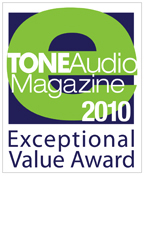
 For those of us that have relatively large power amplifiers, one watt probably wouldn’t make much if any difference at all, but when you’re in the low watt (i.e. under 10 watts per channel) camp, every bit counts, and quality is everything. In case you missed all the buzz about the MiniWatt S1, we were very enthusiastic about it when it was reviewed about a year ago.
For those of us that have relatively large power amplifiers, one watt probably wouldn’t make much if any difference at all, but when you’re in the low watt (i.e. under 10 watts per channel) camp, every bit counts, and quality is everything. In case you missed all the buzz about the MiniWatt S1, we were very enthusiastic about it when it was reviewed about a year ago. 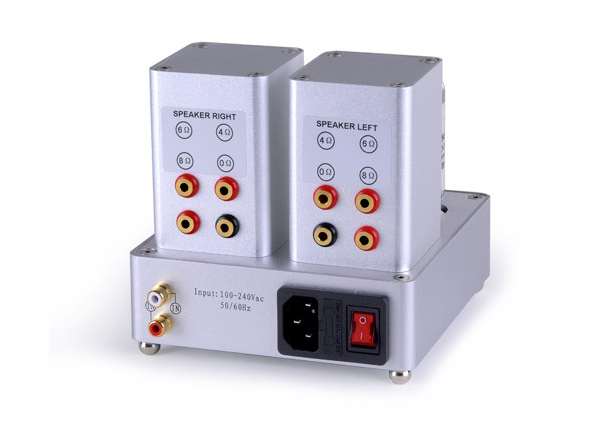 While I’d like to rave about the extra watt, the N3 is really more about quality. Comparing the two amplifiers side by side, you immediately notice the extra body and three dimensionality of the Mini Watt’s latest offering. The easiest comparison will be your favorite solo vocals; listening to some of my favorites from Johnny Cash and Anya Garbarek, the new amplifier sounds as if I moved my speakers a few more feet apart instantly. Once the amplifier had about 100 hours on the clock, it improved a bit, with acoustic instruments having slightly more body.
While I’d like to rave about the extra watt, the N3 is really more about quality. Comparing the two amplifiers side by side, you immediately notice the extra body and three dimensionality of the Mini Watt’s latest offering. The easiest comparison will be your favorite solo vocals; listening to some of my favorites from Johnny Cash and Anya Garbarek, the new amplifier sounds as if I moved my speakers a few more feet apart instantly. Once the amplifier had about 100 hours on the clock, it improved a bit, with acoustic instruments having slightly more body.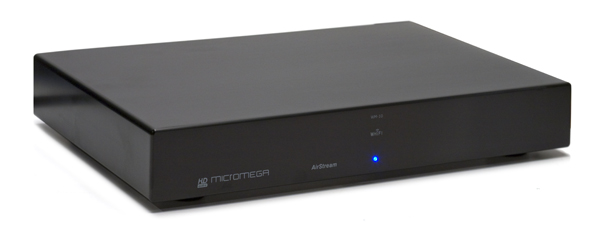 This is a controversial product to say the least. For many of you wanting to extend your digital music network, the $99 Apple Airport express is a great, low-cost way to add a pair of powered speakers somewhere into your environment. However, it is not an audiophile solution. At the other end of the spectrum, we have Micromega, with their $1,499 Airstream, which functionally does no more than the Apple Airport. We could have the same argument comparing the $300 Squeezebox to the $8,500 Sooloos music server. They both do the same thing, stream digital music files, but there’s more to the story.
This is a controversial product to say the least. For many of you wanting to extend your digital music network, the $99 Apple Airport express is a great, low-cost way to add a pair of powered speakers somewhere into your environment. However, it is not an audiophile solution. At the other end of the spectrum, we have Micromega, with their $1,499 Airstream, which functionally does no more than the Apple Airport. We could have the same argument comparing the $300 Squeezebox to the $8,500 Sooloos music server. They both do the same thing, stream digital music files, but there’s more to the story.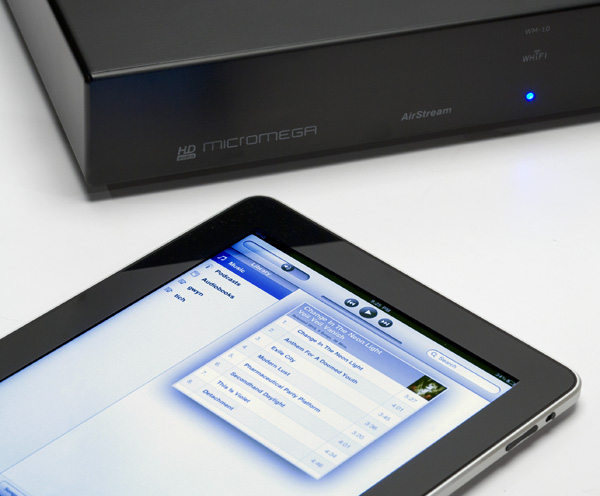
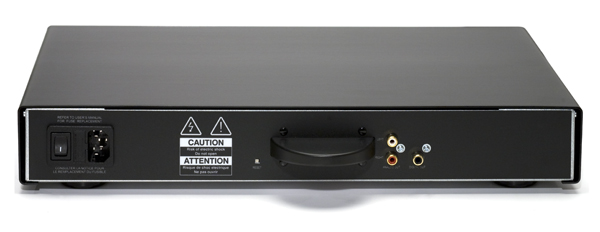
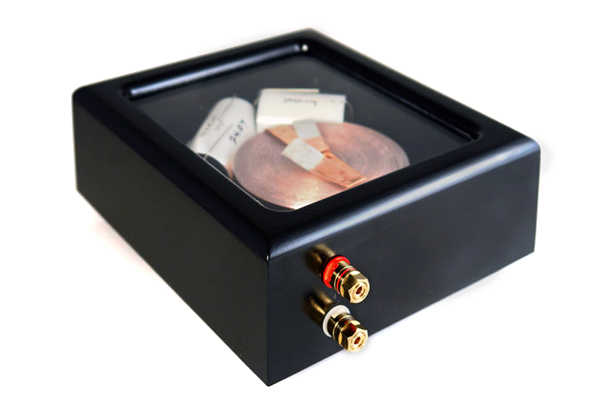 With Magnepan introducing their new 1.7 to replace the 1.6 that has been a staple of their line for about 15 years, many loyal Magnepan owners are probably asking themselves if they should make the move and upgrade to the latest. Knowing how slow Magnepan is (or perhaps cautious and conservative) with upgrades; there is certainly some promise on the horizon for this new speaker that will now feature a “quasi ribbon” driver for the bass panel as well. However, the original 1.6 is still a solid speaker with a lot of life left in it and let’s face it, who wants to sign up for shipping a hundred pounds and going through the audiogon hassle, right?
With Magnepan introducing their new 1.7 to replace the 1.6 that has been a staple of their line for about 15 years, many loyal Magnepan owners are probably asking themselves if they should make the move and upgrade to the latest. Knowing how slow Magnepan is (or perhaps cautious and conservative) with upgrades; there is certainly some promise on the horizon for this new speaker that will now feature a “quasi ribbon” driver for the bass panel as well. However, the original 1.6 is still a solid speaker with a lot of life left in it and let’s face it, who wants to sign up for shipping a hundred pounds and going through the audiogon hassle, right?

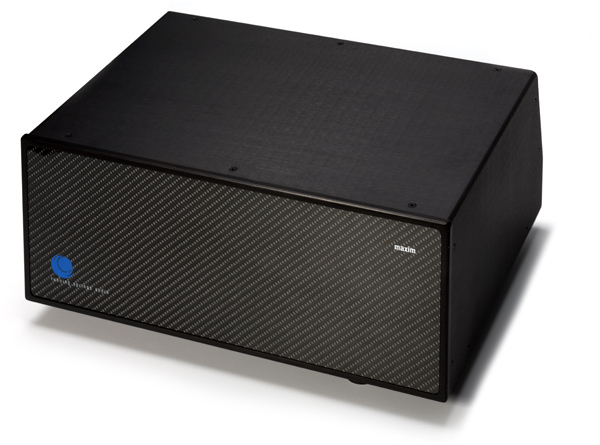 As a long time owner of Running Springs power conditioning products, I was very anxious to hear the effect of their newest power conditioner, the Maxim on my system. Unlike a number of other power product manufacturers at the recent Rocky Mountain Audio Fest that made outrageous claims for their power products (two of which have already been returned to their companies already), RSA designer Dan Babineau simply told me, “If you like your Dmitri, the Maxim uses the advancements I made going from the Haley/Jaco/Danielle series of our products to the Dmitri, but with additional filtering. It’s been optimized for high power/high current amplifiers.”
As a long time owner of Running Springs power conditioning products, I was very anxious to hear the effect of their newest power conditioner, the Maxim on my system. Unlike a number of other power product manufacturers at the recent Rocky Mountain Audio Fest that made outrageous claims for their power products (two of which have already been returned to their companies already), RSA designer Dan Babineau simply told me, “If you like your Dmitri, the Maxim uses the advancements I made going from the Haley/Jaco/Danielle series of our products to the Dmitri, but with additional filtering. It’s been optimized for high power/high current amplifiers.”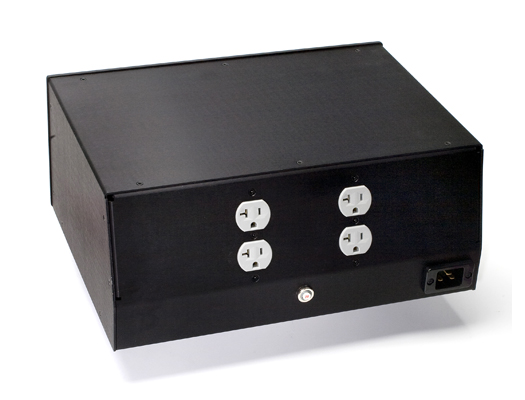
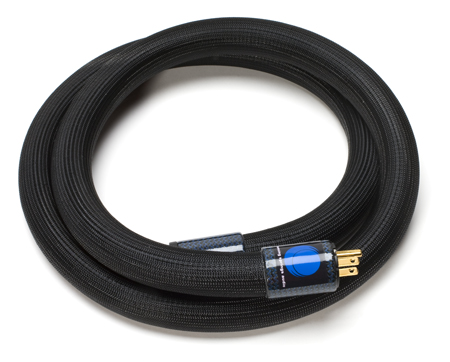
 In the last few years, MartinLogan has received a lot of praise for their hybrid electrostatic designs, mating their legendary electrostatic panel to a dynamic woofer. In the case of the Purity, it’s a pair of 6.5-inch woofers in a very compact package that will only take a 10 x 15 inch patch of your living area.
In the last few years, MartinLogan has received a lot of praise for their hybrid electrostatic designs, mating their legendary electrostatic panel to a dynamic woofer. In the case of the Purity, it’s a pair of 6.5-inch woofers in a very compact package that will only take a 10 x 15 inch patch of your living area.


 Ed. Note: This review was published in late 2008, but we somehow failed to upload it this spring when the site was overhauled. Our apologies!
Ed. Note: This review was published in late 2008, but we somehow failed to upload it this spring when the site was overhauled. Our apologies!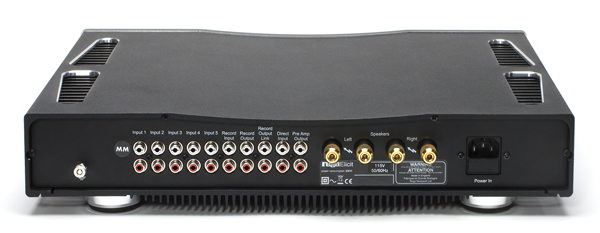
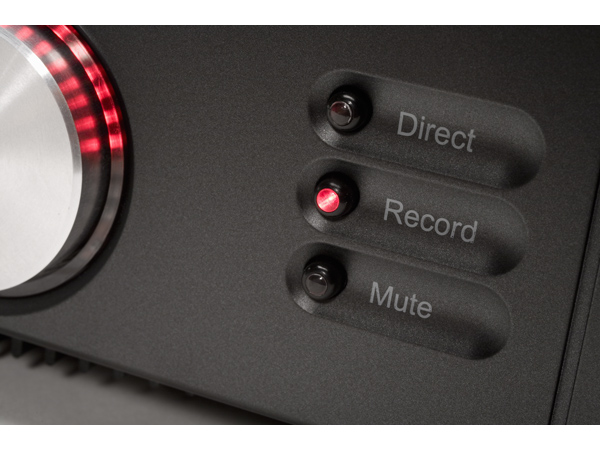
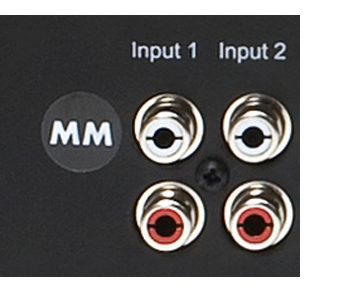

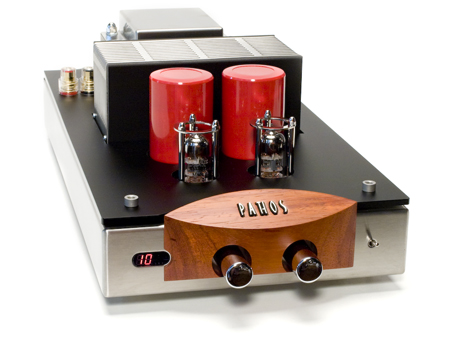 I’ve always been a fan of Pathos Acoustics fusion of Italian style with technology, while always yielding very musical results.
I’ve always been a fan of Pathos Acoustics fusion of Italian style with technology, while always yielding very musical results.
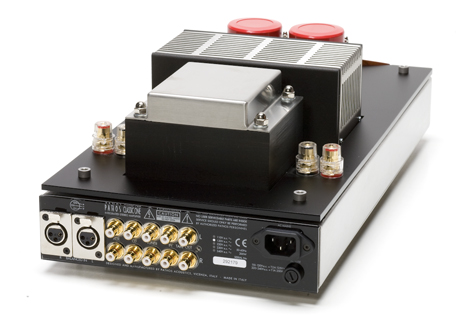
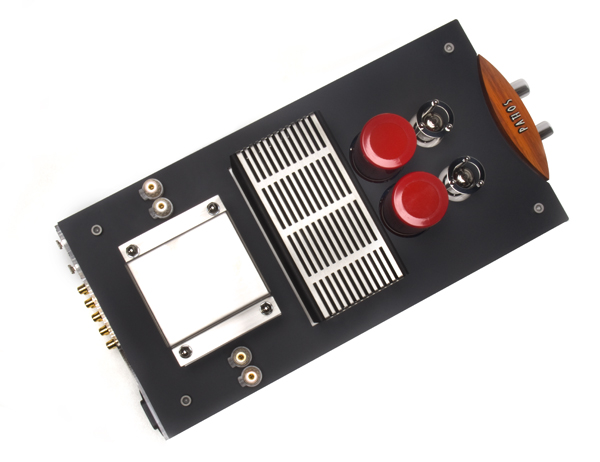
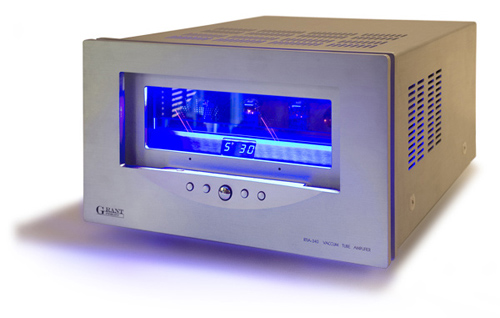 If you like tube amplifiers that hanker back to the glory days of audio with a big, beefy chassis and huge output transformers, the Grant Fidelity Rita-340 is for you. It’s so robustly built that even the careless handling of the UPS guys couldn’t stop it! The substantial crate arrived, looking like it had been dropped off the top of my garage roof, but after I dusted off the Rita and fired it up it worked perfectly and it has worked flawlessly for the past six months. I think this should settle any build questions you might have about this amplifier; anything that can survive that kind of abuse should be fine in everyday use.
If you like tube amplifiers that hanker back to the glory days of audio with a big, beefy chassis and huge output transformers, the Grant Fidelity Rita-340 is for you. It’s so robustly built that even the careless handling of the UPS guys couldn’t stop it! The substantial crate arrived, looking like it had been dropped off the top of my garage roof, but after I dusted off the Rita and fired it up it worked perfectly and it has worked flawlessly for the past six months. I think this should settle any build questions you might have about this amplifier; anything that can survive that kind of abuse should be fine in everyday use.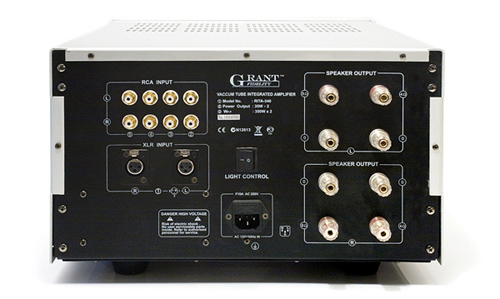 There are two sets of speaker outputs on the rear panel, and while the amplifier is rated to drive speakers from 4-8 ohms, with a tap for 4 and 8 ohms and a common ground. The speakers I tried had varying impedance and I did not notice any issues driving anything.
There are two sets of speaker outputs on the rear panel, and while the amplifier is rated to drive speakers from 4-8 ohms, with a tap for 4 and 8 ohms and a common ground. The speakers I tried had varying impedance and I did not notice any issues driving anything.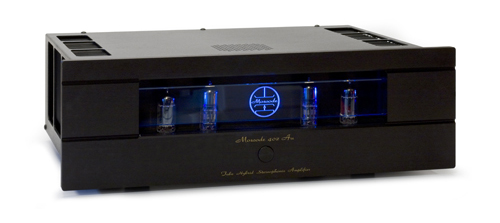
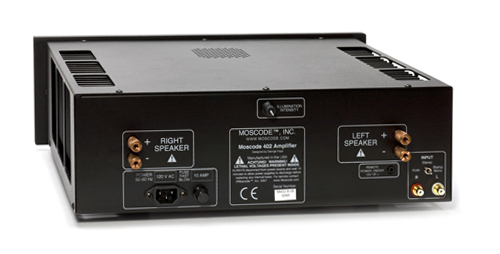
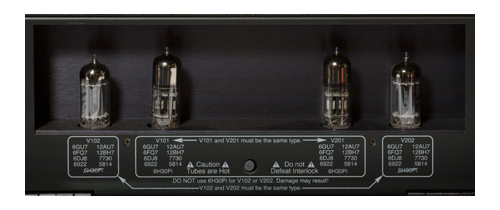
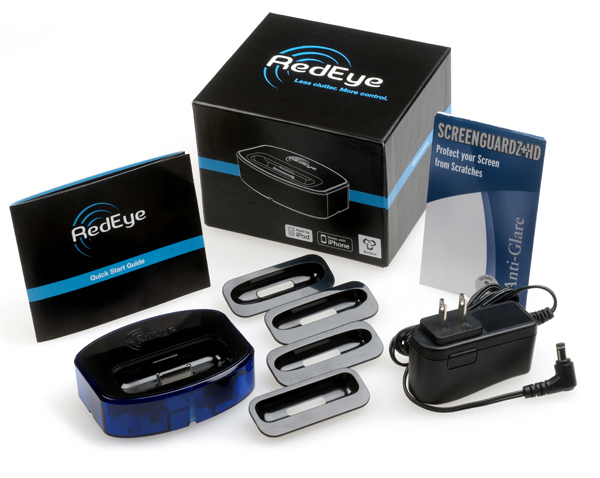


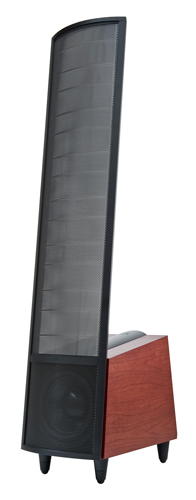 For a few years, MartinLogan’s Summit was their flagship speaker, and it received worldwide praise. At the beginning of this year, MartinLogan took what they’d learned building the new flagship CLX full-range electrostatic speaker system and the Spire hybrid, and they created the current Summit X. Just like the Summit, it features a pair of powered 10-inch woofers with one facing toward you and the other firing toward the floor.
For a few years, MartinLogan’s Summit was their flagship speaker, and it received worldwide praise. At the beginning of this year, MartinLogan took what they’d learned building the new flagship CLX full-range electrostatic speaker system and the Spire hybrid, and they created the current Summit X. Just like the Summit, it features a pair of powered 10-inch woofers with one facing toward you and the other firing toward the floor. MartinLogan calls it “Controlled Dispersion PoweredForceTM Bass” (Say that ten times as fast as you can). You can read the full technical details on their website at:
MartinLogan calls it “Controlled Dispersion PoweredForceTM Bass” (Say that ten times as fast as you can). You can read the full technical details on their website at: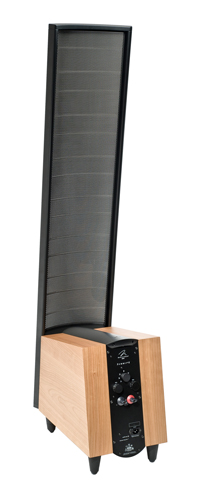 A worthy successor
A worthy successor
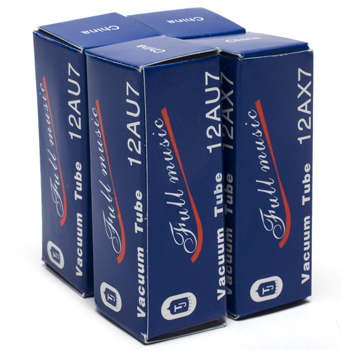 Second test: Driver
Second test: Driver










